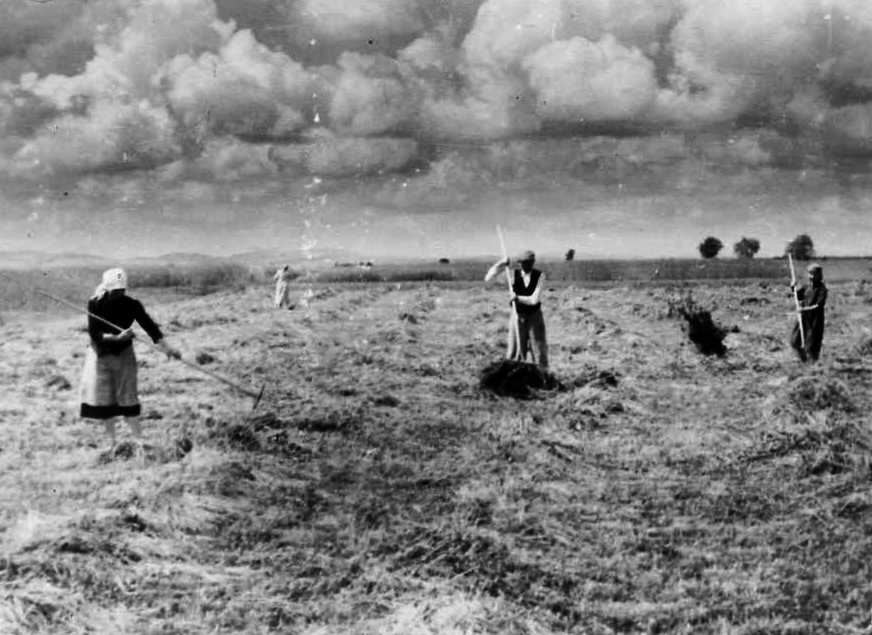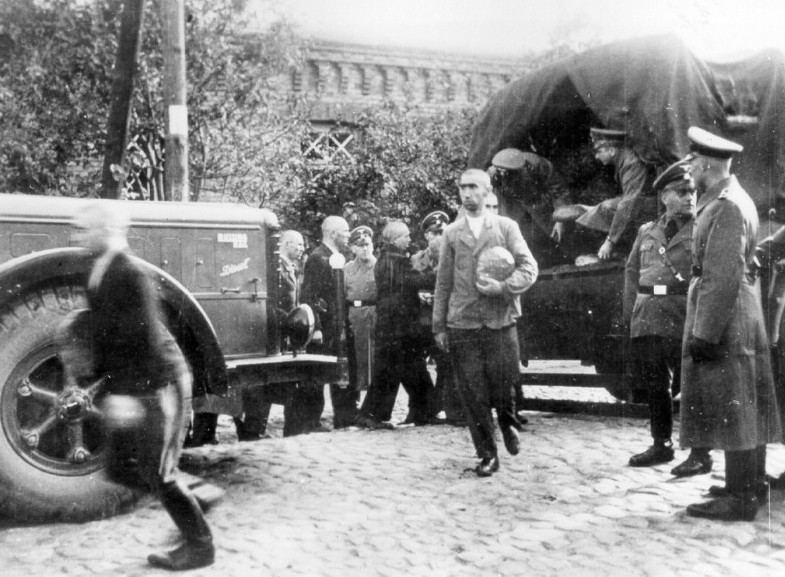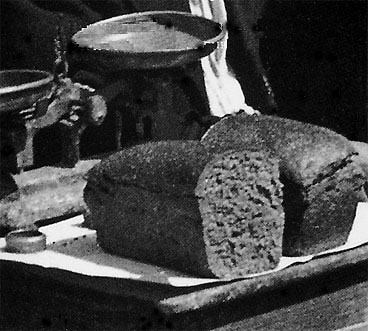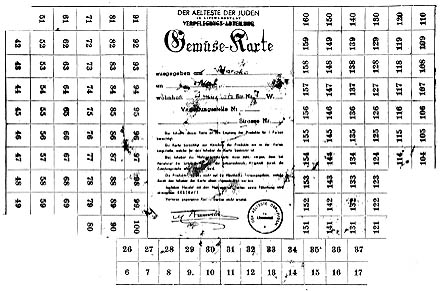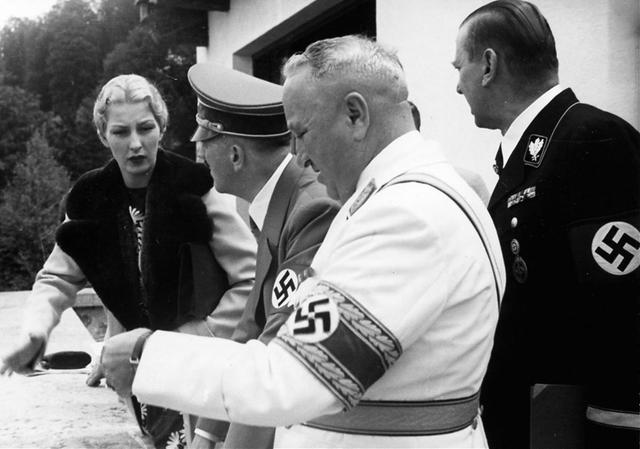Holocaust Education & Archive Research Team |
|
Occupation German Occupation of Europe Timeline
-
[The Occupied Nations]
Poland Austria Belgium Bulgaria Denmark France Germany Greece Hungary Italy Luxembourg The Netherlands Norway Romania Slovakia Soviet Union Sudetenland | |||||||||
POLISH FORT-NIGHTLY REVIEW "How the Germans are starving Poland" Polish Ministry of Information No. 58
Tuesday, December 15th, 1942 London
In the introduction to No.55 of the Polish Fortnightly Review we pointed out that German is pursuing different political and economic objectives in the various parts of occupied Poland, and that the methods applied by the respective German occupation authorities are also different, in accordance with the role which is assigned to the particular area. these differences are also manifest in the sphere of food supplies and in the food rationing system
The conditions of existence for Polish civilians living in the General Government are still worse than those in the "incorporated areas". This artificial creation, shut away behind unnatural boundaries arbitrarily imposed by the Germans, and cut off from the rest of the country, has as much less fertile soil than that of Western Poland. On the other hand, it has a much greater density of population.
Before the war the the area was unable to grow sufficient food to support its inhabitants, and had to make good the deficiencies by bringing in food from the more fertile lands of Western Poland. Even in years of good harvests with some 40,000 toms of wheat and over 200,000 tons rye had to be brought in to cover the shortage. In addition the continual influx of large numbers of Poles, now aggregating nearly two millions, whom the Germans mercilessly drove out of the "incorporated" areas, contributed its share to the progressive deterioration of the food situation.
Economic Exploitation: The Germans have no positive plan of economic policy in regard to the General Government, and aim solely at extracting the maximum benefit from the area for the Reich itself. This "reservation for the Polish population" has got not only to feed itself, but also to supply as much food as possible first and foremost for the great numbers of German soldiers.
The Jewish Food Situation:
The Jewish section of the population as we know, is subjected to general living conditions which are still worse than those of the Poles, and the uncertainty of life for them is increased by the continually changing orders and regulations affecting their day to day existence. In regard to food supplies, they are brought under a completely separate system, which is obviously aimed at depriving them of the most elemental necessities of life.
The separate and isolated quarters of towns which the German authorities have assigned as ghettos for the Jewish inhabitants are theoretically autonomously administered and are completely cut off from the outside world. They are under the supervision of the special German commissaries, who have unrestricted powers. Economic life inside the ghetto, and in particular the question of food supplies for its inhabitants, is in the hands of the Jewish Councils or "Judenrat".
All trade and commodity exchange, including the supply of foodstuffs, goes through a special German department know as the "Transferstelle". This group is responsible for allocating and selling to the ghetto all kinds of goods, including food, as the respective German food or other departments allow at any moment. The goods thus obtained by the ghetto are distributed to the shops by the "Supplies Establishment," which is a special department under the Jewish Council. No article of food not included in either of these two categories can be sold to Jews, either inside or outside of the ghettos. In May, 1941, the German authorities gave permission for barely 154 tons of vegetables to be taken into the Warsaw ghetto, this amount working out a two-thirds a pound per person per month, and this was a comparatively high quota, for in the previous month only 48 tons had been allowed to come on to the ghetto market.
The quantity allowed in the ration is continually changed, the tendency being to reduce the allotted quantities. The possession of a ration card is by no means a guarantee that a ration will be obtainable.
From information received through neutral sources, the weekly rations of the most important articles of food in the Warsaw ghetto during a certain unspecified period of 1941 were as follows:
In such conditions the starving Jewish population has to resort to the purchase of food on the ghetto black market, which is supplied by smuggling over the walls at the danger of life, and by the extensive bribery of the German guards. Naturally, prices on the ghetto black market are considerably higher even by comparison with those on the Polish black market.
Thus, while the rations for Jews are only a half a third of the rations for Poles, the prices on the black market are twice as high. A Jewish worker employed on forced labor, and receiving four zlotys a day could buy (at these prices) only a half a kilo of potatoes, and a Jewish tailor earning about 50 zlotys weekly could only afford to purchase about a half a kilo of fat.
The inevitable decline in the ghetto population thus resulting was compensated for by the continual influx of Jews driven into the ghettos by the German authorities, who rounded them up not only from all over Poland, but from all over occupied Europe.
Food rations in the other Occupied Countries
There is one further aspect of the question which we may consider. Poland is not the only country under German occupation, and it is of interest to compare the food rations of the Polish populace with those assigned to persons in other occupied countries.
Country Meat Bread Sugar All Fats
Conclusion
It would be erroneous to conclude that the Germans in robbing the temporarily subjugated nations of their food, are motivated only by their temporary difficulties, and only obeying some sort of necessity, or that their action is dictated simply by the need for assuring adequate feeding of the German people in order to enable them to cope with the waging of an unprecedented war. Dr. Ley, the German Minister for Labor, made this abundantly clear when her wrote in Der Angriff on January 31, 1940, the following words: In the German plan, Poland was to lose her independent existence forever and to cease to exist as a separate State, and consequently she has become an experimental field, or a sort of "Living Laboratory" for what the German New World Order would mean in that part of Europe.
Sources:
Holocaust Historical Society US National Archives & Records Administration KEW
Copyright. Carmelo Lisciotto H.E.A.R.T 2009
|
